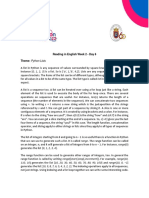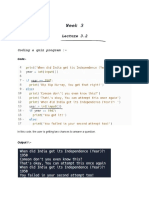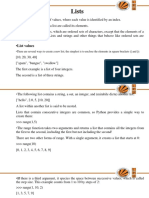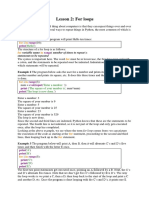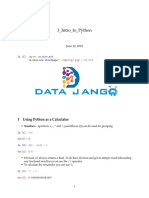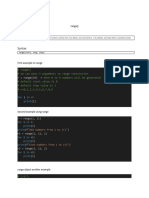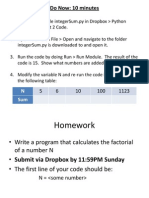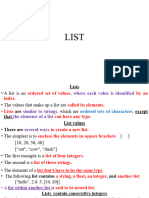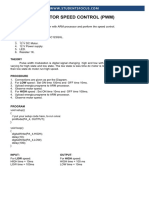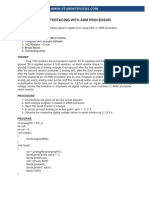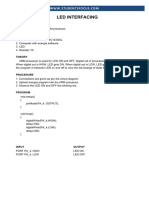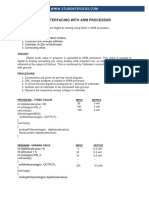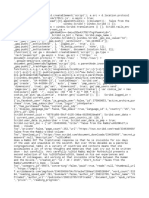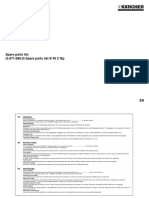0% found this document useful (0 votes)
32 views4 pagesWeek 6
The document discusses the use of for loops and the range function in Python for iterating over indices and elements in lists and strings. It provides examples of counting adjacent character repeats and shifting list elements, emphasizing the importance of knowing indices for certain operations. Additionally, it introduces nested loops, illustrating their use in calculating averages from a list of lists.
Uploaded by
Anand DuraiswamyCopyright
© © All Rights Reserved
We take content rights seriously. If you suspect this is your content, claim it here.
Available Formats
Download as DOCX, PDF, TXT or read online on Scribd
0% found this document useful (0 votes)
32 views4 pagesWeek 6
The document discusses the use of for loops and the range function in Python for iterating over indices and elements in lists and strings. It provides examples of counting adjacent character repeats and shifting list elements, emphasizing the importance of knowing indices for certain operations. Additionally, it introduces nested loops, illustrating their use in calculating averages from a list of lists.
Uploaded by
Anand DuraiswamyCopyright
© © All Rights Reserved
We take content rights seriously. If you suspect this is your content, claim it here.
Available Formats
Download as DOCX, PDF, TXT or read online on Scribd
/ 4









